Journey to Chiang Mai: Discovering the Beauty of Lanna Temples

Hello everyone
Last month, I embarked on a solo journey to Chiang Mai, eagerly anticipating the opportunity to explore its enchanting temples. There was something about the temples in the northern region that intrigued me—they were said to possess a unique charm unlike any others. Fascinated by the diversity each region had to offer, I set out on my adventure with a heart full of curiosity.
Upon arriving in Chiang Mai, I checked into a quaint hotel nestled along Tha Phaeng Road in Mueang Chiang Mai. The road itself was renowned for its captivating surroundings, adorned with magnificent temples steeped in history. To my delight, the hotel I had chosen was located right next to the illustrious Buppharam temple, granting me an awe-inspiring view from my room. From there, I could marvel at the majestic pagoda that reached for the heavens.
The next morning, I woke up early, eager to immerse myself in the spiritual atmosphere of the temple. As I stepped foot onto the temple grounds, I was taken aback by the sheer beauty that lay before me. The grandeur of Buppharam temple was beyond my wildest imagination. The intricate details of its architecture and the tranquil ambiance exuded an air of serenity that instantly captivated me.
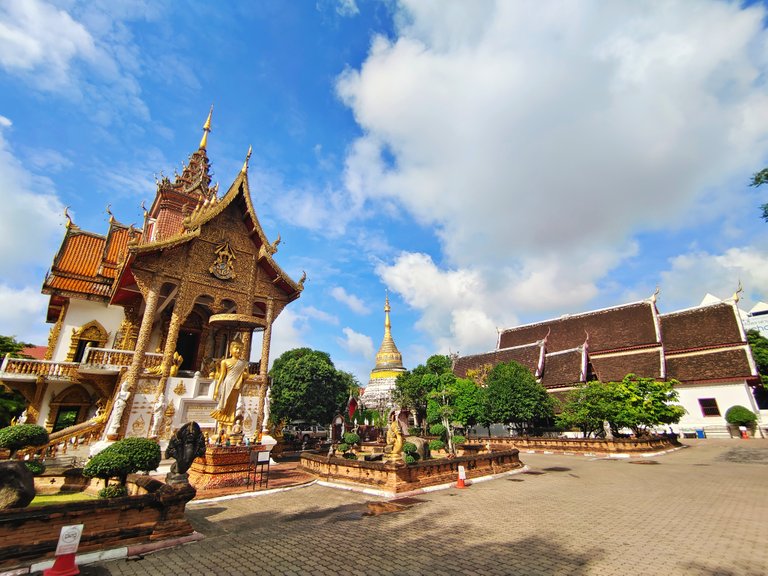
Bupparam temple, an architectural marvel steeped in history, proudly stands at No. 143, Tha Phae Road, Chang Khlan Subdistrict, within the captivating Mueang District of Chiang Mai Province. Its roots trace back more than 500 years, harking back to the reign of Phraya Muang Kaew, the twelfth monarch of the esteemed Mangrai Dynasty that ruled over the ancient Lanna Kingdom.
The temple's rich history and cultural significance lend an air of reverence to its majestic presence. It has witnessed the passage of time, surviving wars, political shifts, and societal changes while remaining a symbol of spiritual devotion and architectural splendor.
Constructed under the watchful eye of Phraya Muang Kaew, Bupparam temple embodies the distinctive Lanna architectural style, characterized by intricate details, ornate carvings, and vibrant colors. Its design pays homage to the artistic traditions and spiritual beliefs of the region, with every nook and cranny telling a story of its own.

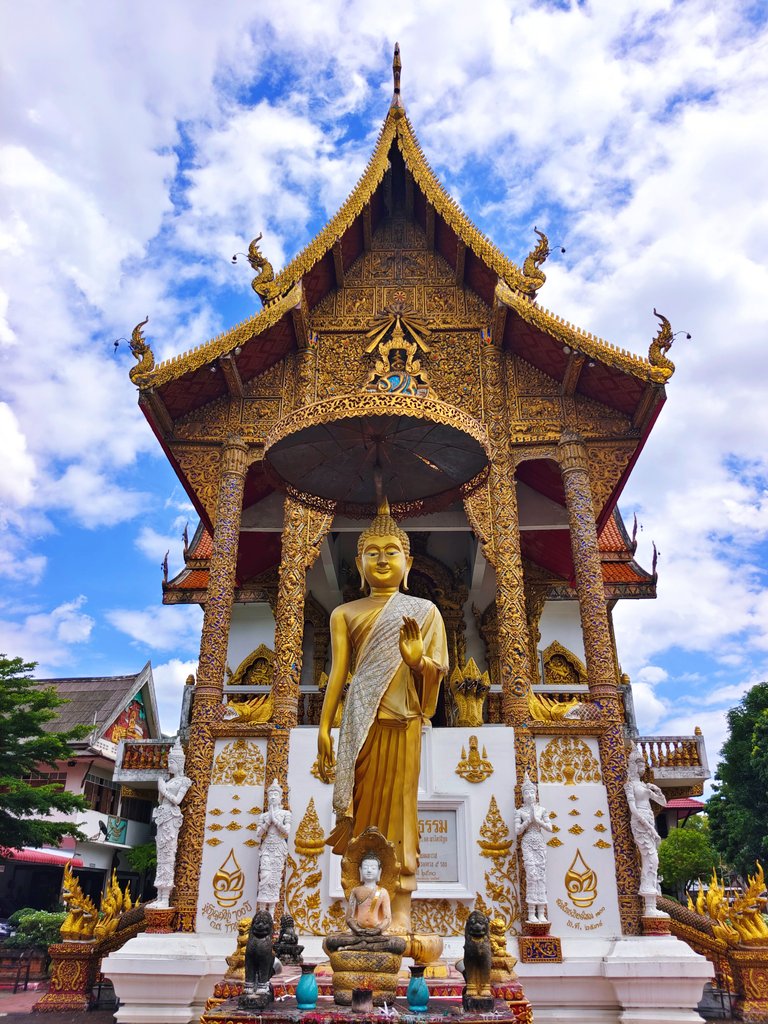
Hom Montien Dharma, a remarkable structure of Lanna-style architecture, stands proudly as a two-story tetrahedron mondop within the city of Chiang Mai. Its construction began in 1980 and reached completion in 1995, resulting in a magnificent edifice that seamlessly blends tradition with contemporary design.
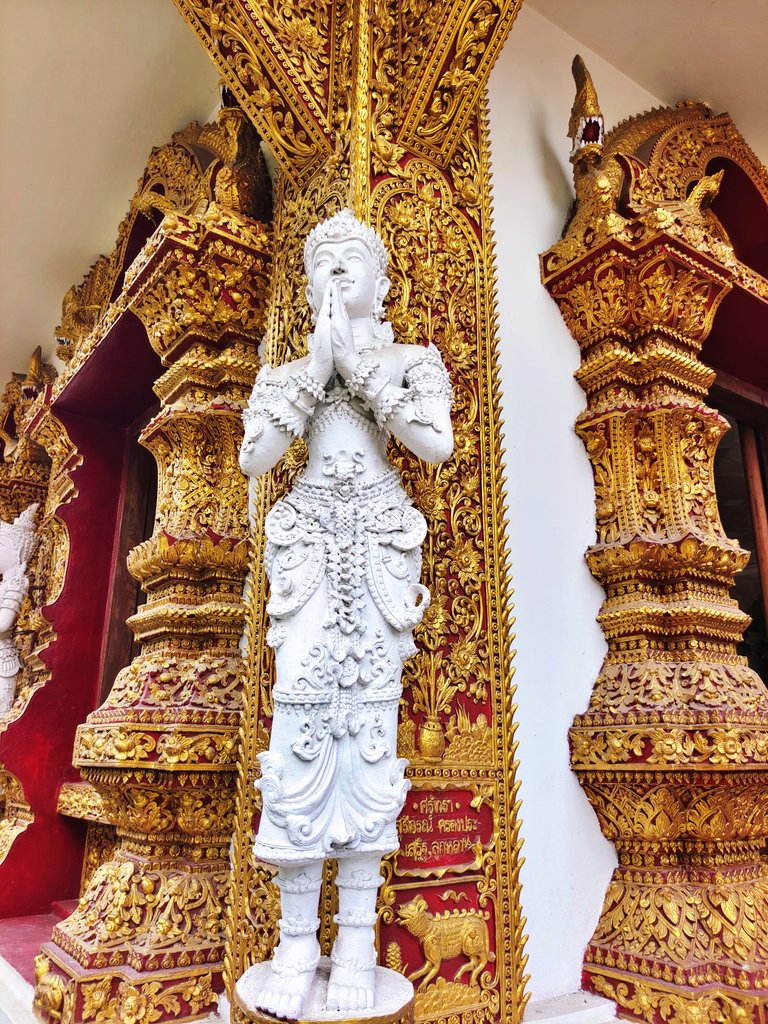

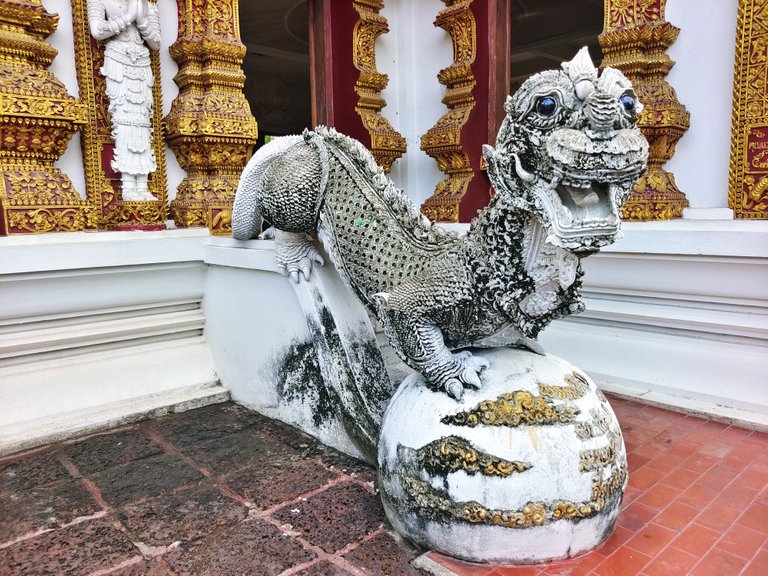


The lower floor of Hom Montien Dharma holds within it a treasure trove of knowledge and cultural artifacts in the form of the Lanna Local Cultural Center's library. Stepping into this space, one is immediately greeted by a collection that represents the diverse aspects of Lanna culture, capturing the essence of the people's way of life in the past.
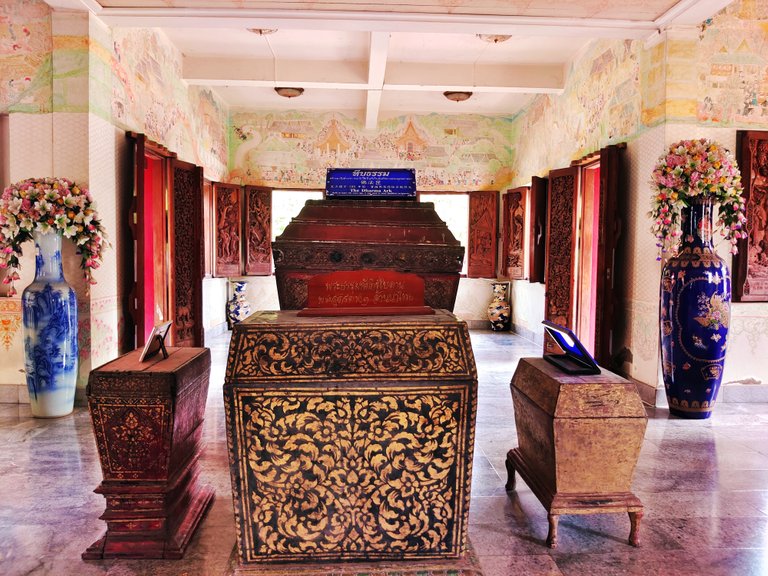
As I walked among the shelves and cabinets, I noticed an array of Dharma chests and Dharma books carefully stored. These sacred chests, adorned with intricate carvings and embellishments, contain precious religious manuscripts and texts. They serve as a testament to the spiritual significance embedded within the Lanna culture, highlighting the devotion and reverence of its people towards their religious practices.
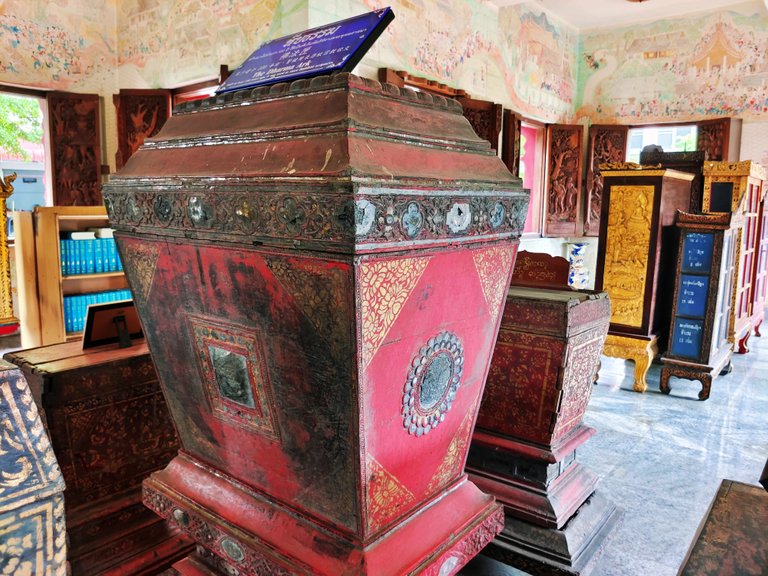
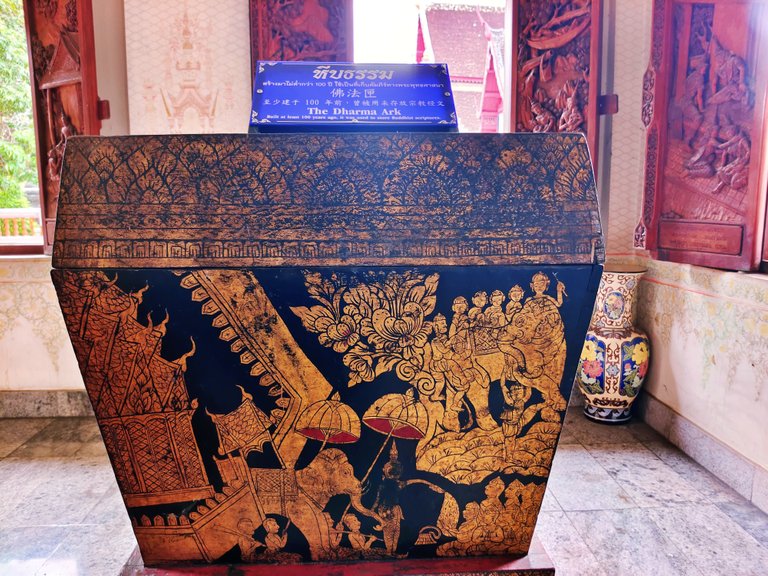

The walls of the library are adorned with captivating paintings, each telling a story and offering insights into the daily lives, traditions, and historical events of the Lanna people. These exquisite artworks provide a visual narrative, allowing visitors to immerse themselves in the rich tapestry of Lanna culture and gain a deeper understanding of its nuances.

Within the library, one can sense the deep respect and commitment to preserving the cultural heritage of the Lanna people. The collection of Dharma chests, Dharma books, and indigenous antiques stands as a testament to the ongoing efforts to safeguard and promote the legacy of the Lanna culture for future generations.

As I perused the shelves and admired the paintings on the walls, I couldn't help but feel a profound sense of gratitude for the opportunity to witness such a rich display of Lanna heritage. Each artifact and painting spoke volumes about the customs, values, and creativity of the Lanna people, instilling in me a deep appreciation for their way of life.
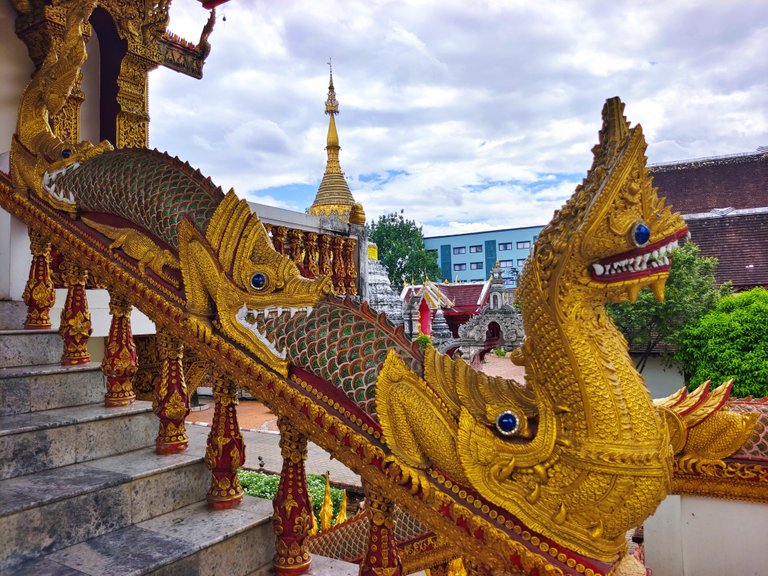
In the northern region of Thailand, the temples possess yet another distinct feature that adds to their unique identity. As one ascends the stairs leading to these magnificent structures, they are greeted by the presence of statues of Makara, legendary creatures deeply embedded in the beliefs and folklore of the northern people. These statues can be found adorning the temples throughout the northern region, offering a captivating glimpse into the cultural tapestry of the area.
The Makara is a mythical creature that combines elements of both crocodiles and serpents, resulting in a captivating and awe-inspiring form. With its body curving sinuously and legs protruding gracefully, the Makara emanates a sense of power and grace. It is often depicted in a posture known as "spitting," where it appears to be expelling a serpent from its mouth. This particular depiction is referred to as the "Makayanak," and it serves as a guardian figure, watching over and protecting the religious spaces.
These statues of Makara, with their intricate details and artistry, can be found adorning the railings of temples and other sacred places. Their presence adds to the overall ambiance of the temple, invoking a sense of mystique and reverence. As one gazes upon these magnificent creatures, they are transported into a world of mythical wonder, where legends and beliefs intertwine with the spiritual realm.

As I climbed the stairs of one of these magnificent temples, I couldn't help but be captivated by the presence of the Makara statues. Their intricate craftsmanship and mythical allure added an extra layer of enchantment to the already awe-inspiring surroundings. The Makara's commanding presence, as it stood guard along the railing, evoked a sense of reverence and respect.

Ascending to the second floor of Hom Montien Dhamma, one is greeted by the majestic presence of a Buddha image that holds great historical and artistic significance. This particular Buddha image was bestowed with the esteemed name "Phra Phuttha Bupphaphimongkol Phor Por Ror" by the revered King Rama IX, a testament to the deep reverence and respect for Buddhism within Thai culture.
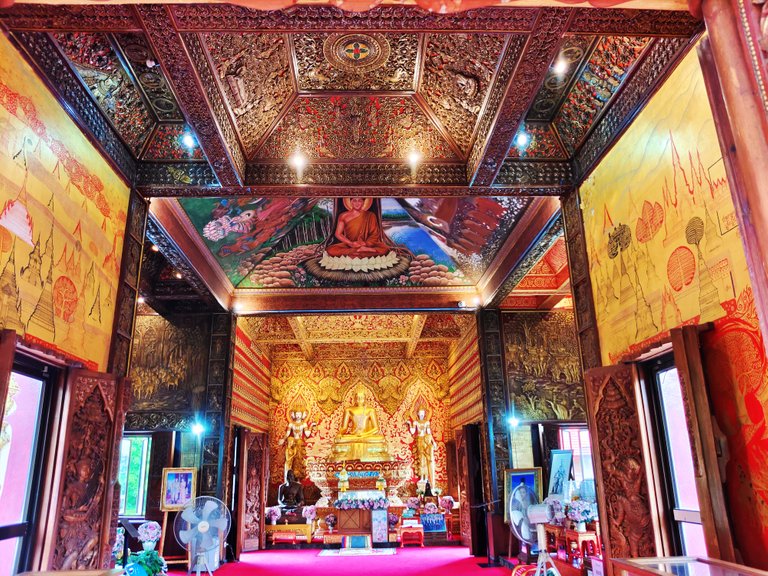

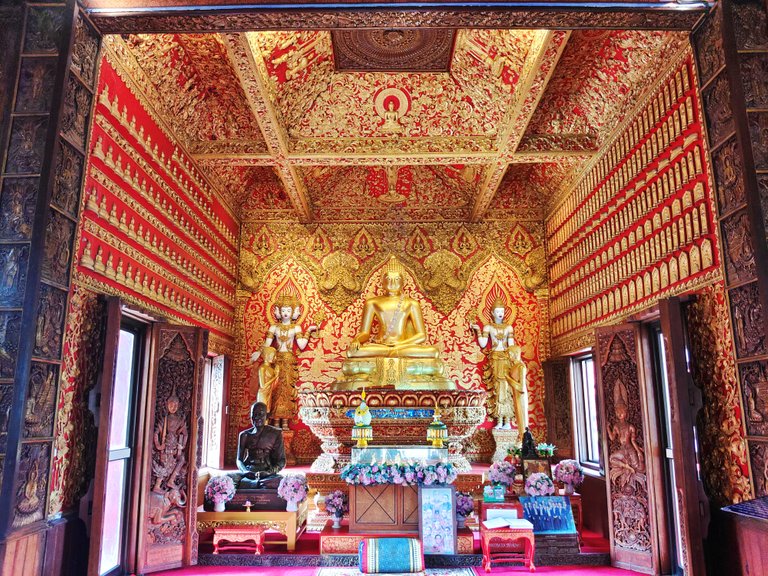
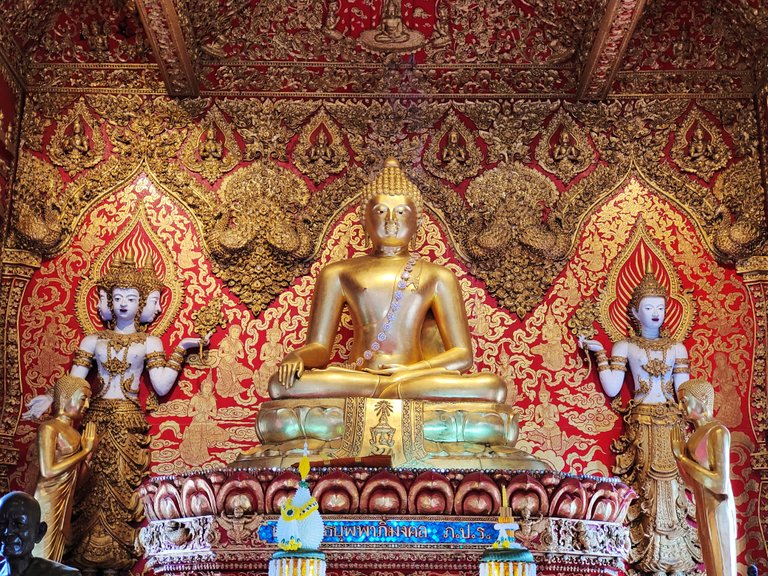
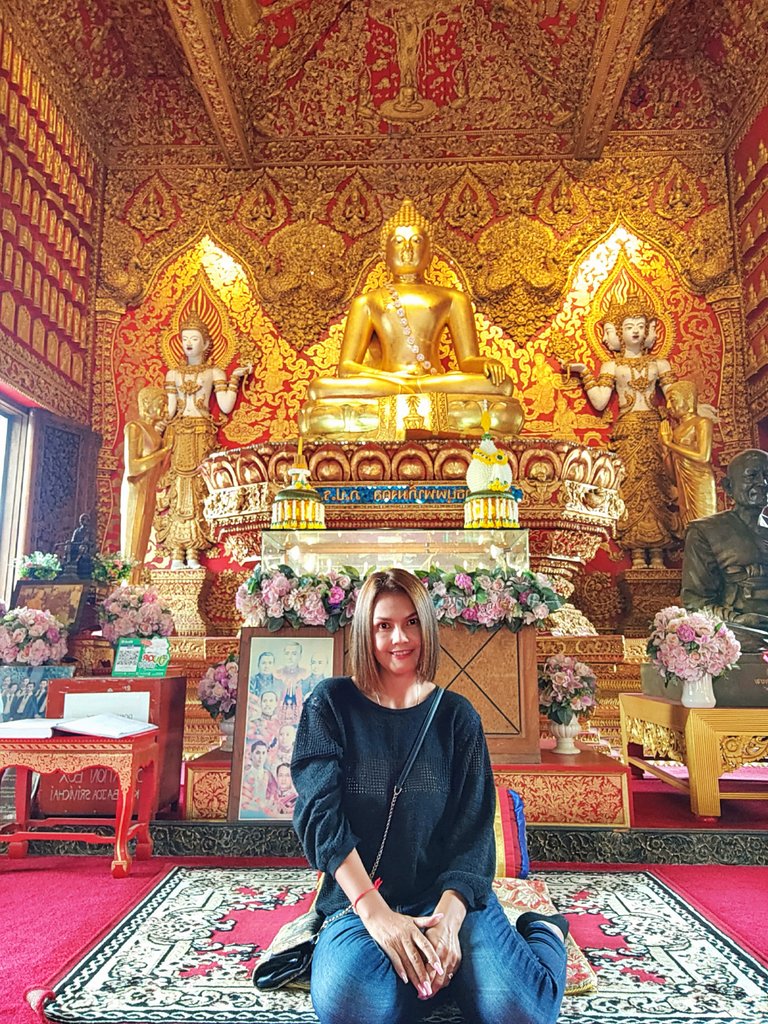
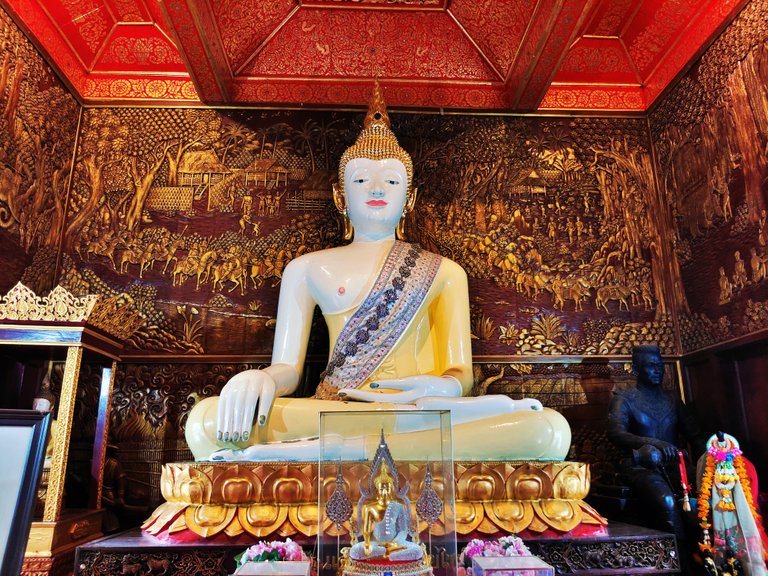
The Phra Phuttha Naret Sak Chai Pairee perishes, all carved meticulously from teak wood approximately 400 years old. The craftsmanship of the statues is nothing short of extraordinary, with every delicate detail revealing the skill and devotion of the artisans involved. The Buddha image, in particular, exudes an aura of serene beauty, emanating peace and tranquility to all who gaze upon it. The teak wood carvings, masterfully sculpted, breathe life into the sacred forms, evoking a profound sense of reverence and spirituality.
The whole body of the Buddha image exudes a sense of ethereal grace and timeless elegance. The intricate carvings on the statue showcase the sublime artistry of the craftsmen, capturing the essence of Buddhist philosophy and teachings. The smooth contours and gentle expressions of the Buddha's features convey a sense of compassion and enlightenment, inviting devotees and visitors alike to reflect upon the path of spiritual awakening.
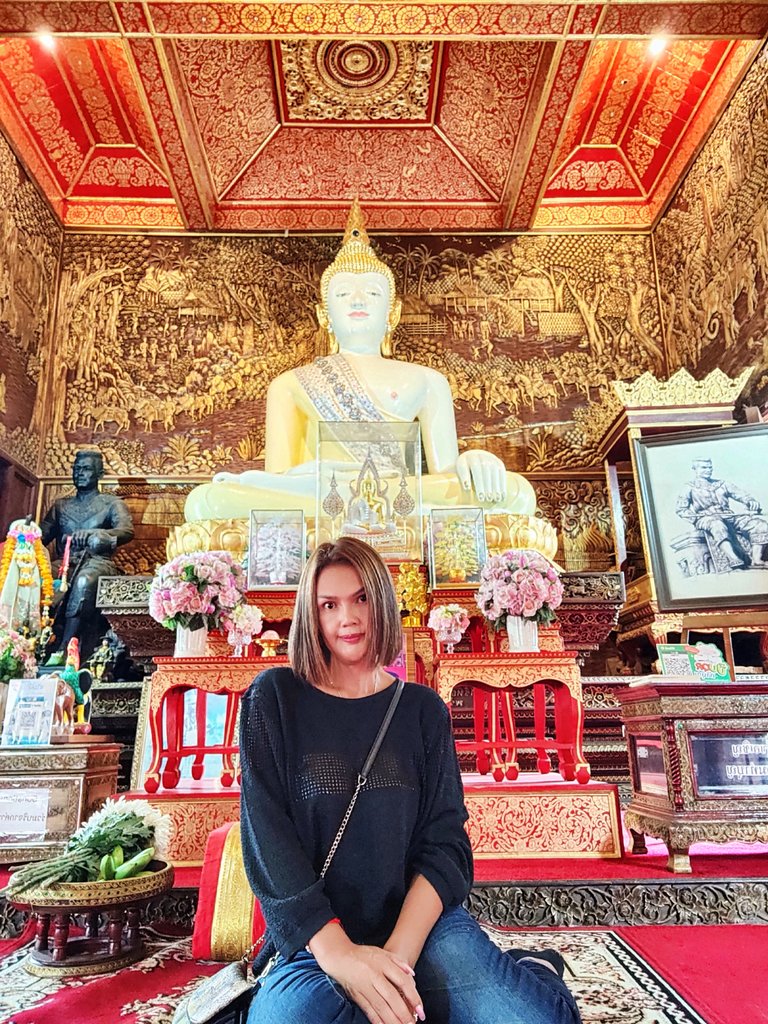
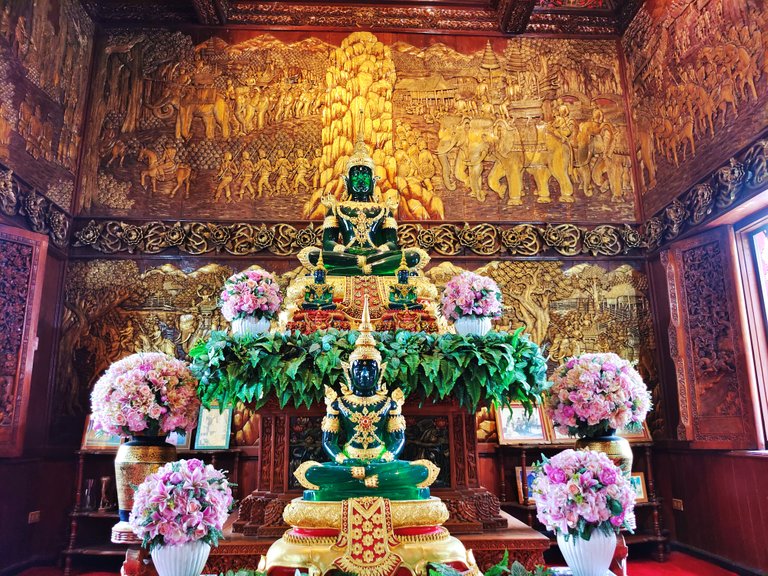



There stands a magnificent and spacious chapel adorned with the intricate beauty of Lanna and Burmese art. The walls of the chapel are adorned with exquisite Burmese stucco patterns, serving as a testament to the cross-cultural influences that have shaped the region's artistic heritage.
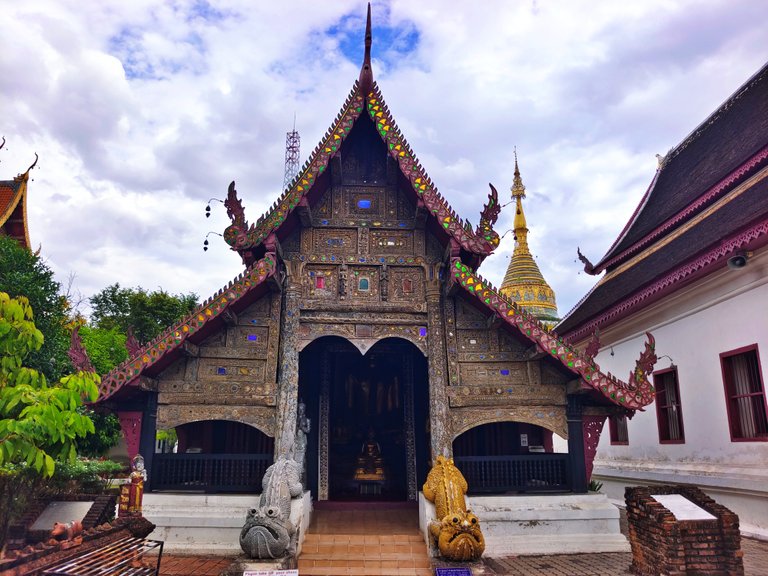

Enshrined at the heart of the chapel is a Buddha image crafted with the meticulous skill of Lanna artisans. Made from pure copper, this sculpture reflects the mastery of Lanna artistry, capturing the essence of serenity and spiritual enlightenment. Its presence within the chapel invites contemplation and reverence, offering a focal point for devotion and introspection.
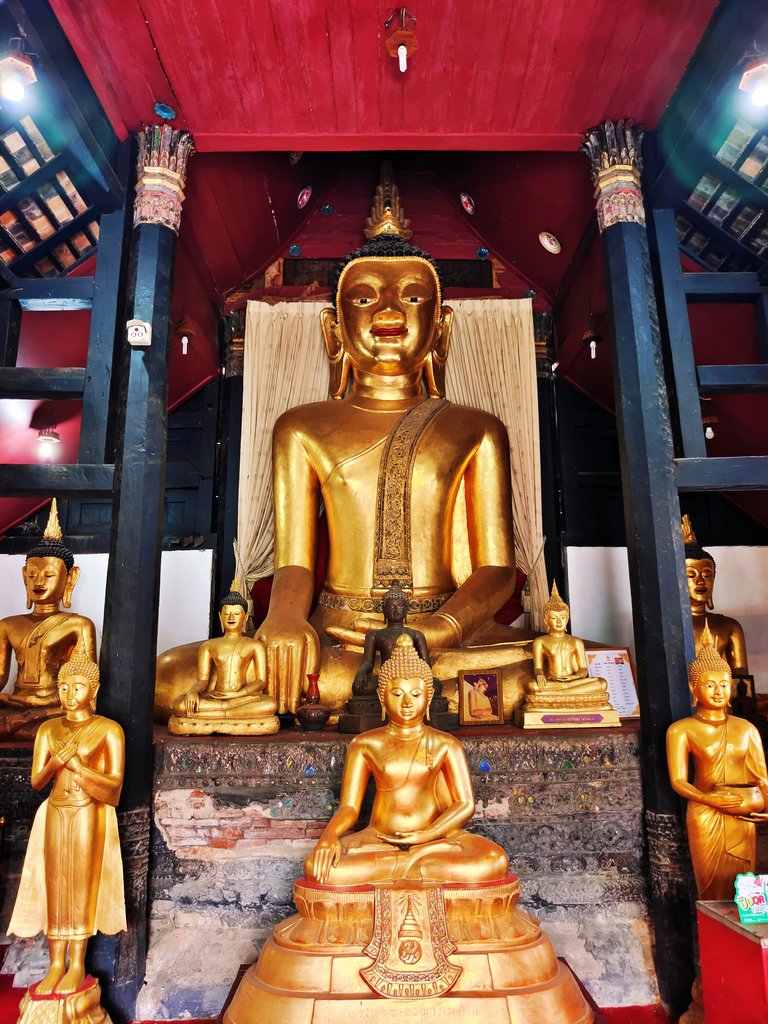
Adding to the sacred ambiance, the chapel features two Chiang Saen Buddha images on the left and right sides. These bronze sculptures, cast in the distinctive style of the Chiang Saen region, are a testament to the rich artistic heritage of Northern Thailand. Each sculpture embodies the grace and dignity of the Buddha, captivating the beholder with its serene presence.
As one enters the chapel, the fusion of Lanna and Burmese artistry creates a harmonious symphony of cultural aesthetics. The interplay between the Burmese stucco patterns, the copper Buddha image, and the Chiang Saen Buddha images showcases the depth and diversity of artistic expressions that have thrived in the region.

Adjacent to the previously mentioned chapel, there stands another sanctuary that exudes the captivating beauty of Lanna art. This sanctuary, built later but still in the exquisite Lanna art style, is a testament to the enduring legacy and reverence for the artistic traditions of the region.

Within the sanctuary, the focal point is a grand and awe-inspiring Buddha image. This large Buddha image, radiating a sense of tranquility and compassion, holds a sacred space for contemplation and spiritual reflection. Its presence within the sanctuary invites devotees and visitors to find solace and connect with the profound teachings of Buddhism.
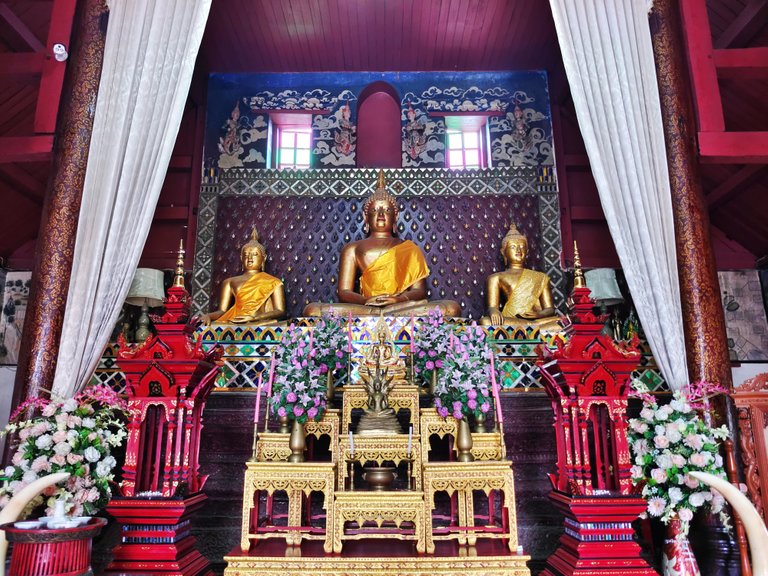
The craftsmanship of the Buddha image reflects the mastery of Lanna artistry, with every detail thoughtfully crafted to evoke a sense of reverence and awe. The serenity on the face of the Buddha, the gentle curves of the body, and the delicate positioning of the hands all contribute to the overall aura of grace and enlightenment.
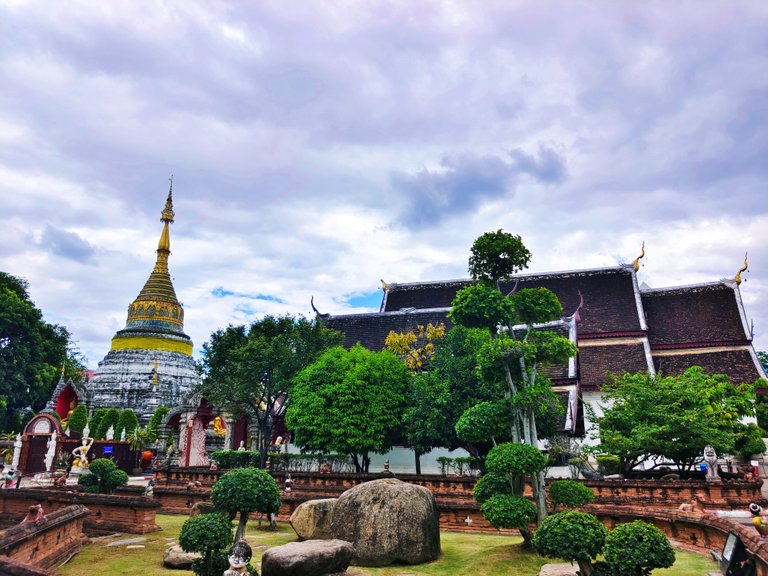
Behind the chapel, there rises a magnificent and grand Lanna art pagoda that commands attention with its striking presence. This pagoda, steeped in cultural significance, serves as a repository for the precious relics of the Lord Buddha. Its towering structure, adorned with intricate Lanna artistry, stands as a symbol of veneration and spiritual devotion.
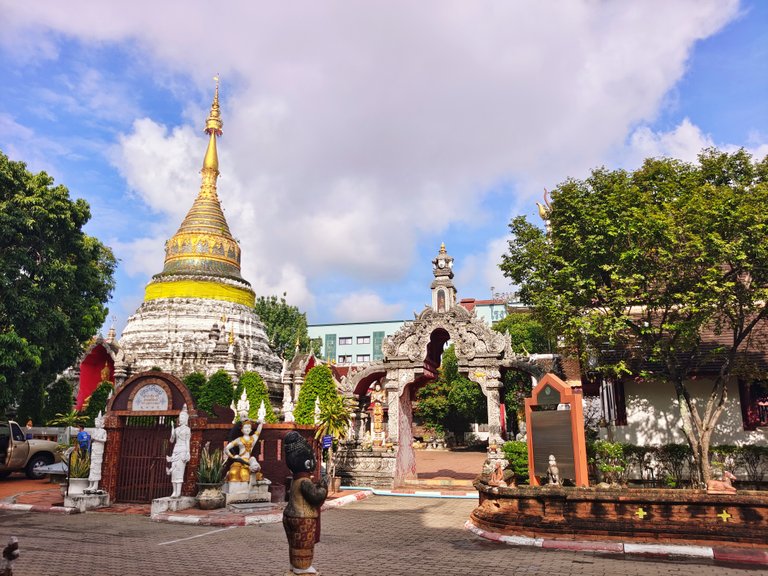
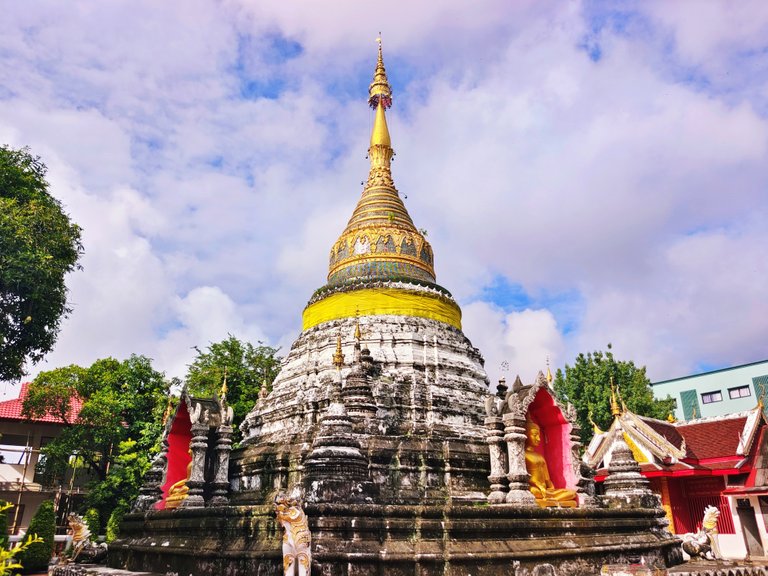
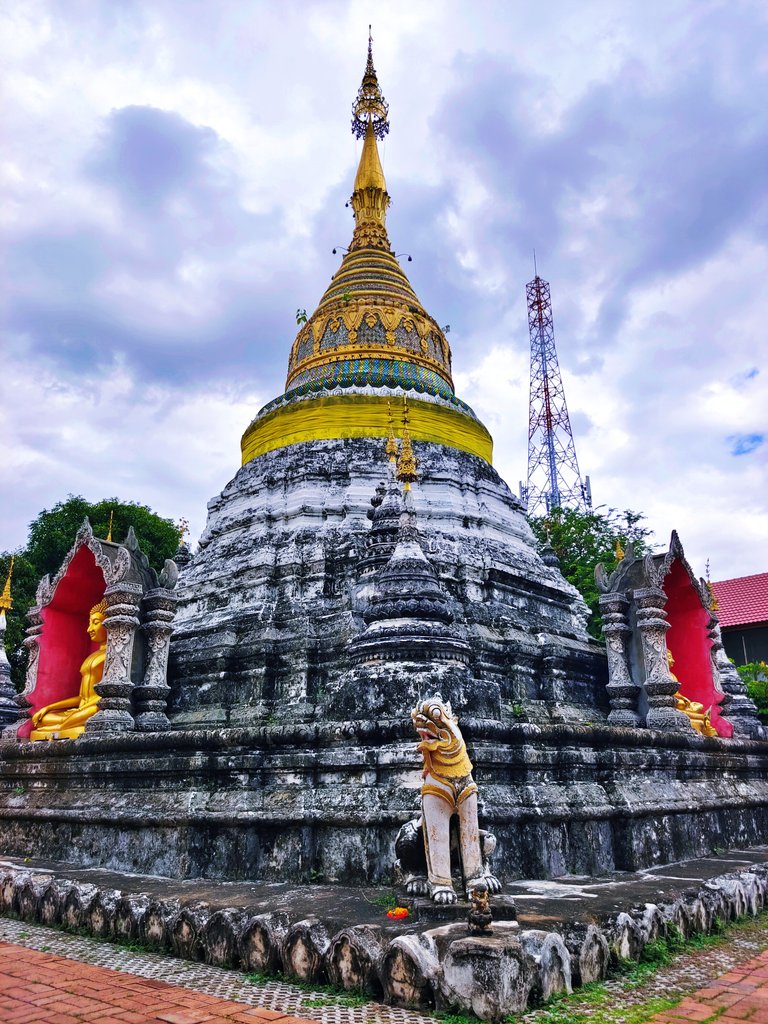
Thank you for your support
ขอบคุณสำหรับการโหวต
เลิฟนะยู้ววววววว


Congratulations, your post has been added to Pinmapple! 🎉🥳🍍
Did you know you have your own profile map?
And every post has their own map too!
Want to have your post on the map too?
!MEME
Credit: arthursiq5
Earn Crypto for your Memes @ HiveMe.me!
!LOLZ
lolztoken.com
I wish you were a little patient.
Credit: reddit
@baibuaza, I sent you an $LOLZ on behalf of nilarwin
(6/8)
ENTER @WIN.HIVE'S DAILY DRAW AND WIN HIVE!
Hiya, @lizanomadsoul here, just swinging by to let you know that this post made it into our Top 3 in Daily Travel Digest #1942.
Your post has been manually curated by the @pinmapple team. If you like what we're doing, please drop by to check out all the rest of today's great posts and consider supporting other authors like yourself and us so we can keep the project going!
Become part of our travel community:
Thank you very much🙏
Beautiful picture and temple. Nice sharing
This is beautiful. Must be interesting embarking on a solo journey. It has this peace and tranquility. You definitely found it interesting I guess ☺️☺️
This temple is spectacular from all points of view, I am convinced that you had enough time to visit it in peace.
So beautiful
Thank you ka.
Wow! have to get this place on my list of places to visit :)